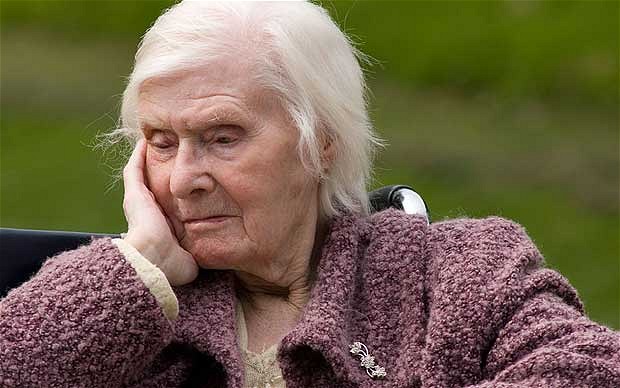A study published in the Journal of the American Medical Association (JAMA) on December 7, 2020; titled: Euthanasia and Physician-Assisted Suicide in Patients With Multiple Geriatric Syndromes examines 53 euthanasia deaths based on multiple geriatric syndromes (MGS) in the Netherlands. 19 of the 53 MGS euthanasia deaths listed loneliness as a primary reason.
The study authors, state that the Dutch Euthanasia Code defines a geriatric syndrome as degenerative in nature, often occurring in older patients. MGS syndromes are defined as:
sight impairment, hearing impairment, osteoporosis, osteoarthritis, balance problems, or cognitive deterioration, the Dutch RTE guidance for physicians states that these geriatric syndromes may cause unbearable sufferingwithout the prospect of improvement “in conjunction with the patient’s medical history, life history, personality, values and stamina.”
The study examines 53 MGS euthanasia deaths. 41 were female, 28 lived independently, and none of them had life-threatening conditions. 34 cases had visual impairment, 28 cases had hearing loss, 25 cases had pain and 22 cases had chronic tiredness. All of these euthanasia deaths were over the age of 80 and 41 were over the age of 90.
I understand that MGS means that these people claim to have multiple impairments, but chronic tiredness is often associated with treatable health conditions or depression.
It is concerning that 33 of the deaths were triggered by an incident such as (eg, a fall, an infection, a hospitalization, or the loss of a close relative). It is normal that someone will be upset after an incident, but with good care, a person will often feel better physically and emotionally after a few weeks. It is also concerning that 11 cases indicated that they wanted to die because of fear of falling. It is understandable that a senior will fear falling, but lethal injection is a rejection of proper care.
Disability discrimination is self-evident in the analysis. 44 of the 53 euthanasia deaths listed loss of mobility as a primary reason for wanting to die. It is understandable that an active person will be upset when they lose mobility, even if the loss of mobility is temporary, but dying by lethal injection in conjunction with loss of mobility clearly indicates negative attitutes towards disability. People with disabilities should take notice.
Further to that the study indicates that in 19 of the MGS euthanasia deaths, that loneliness was a primary reason.
We live in a culture of loneliness, but the loneliness is not solved by killing the lonely person. I understand that MGS refers to multiple conditions, nonetheless, loneliness and despair is solved by caring and being with, not lethal injection.
Follow LifeNews on the MeWe social media network for the latest pro-life news free from Facebook’s censorship!
It is important to note that 40% of the MGS euthanasia deaths were carried out by the Netherlands euthanasia clinic. The euthanasia clinic carries out euthanasia deaths that other physicians have rejected. This is also the reason why the euthanasia clinic carries out most of the psychiatric euthanasia deaths.
One of the euthanasia deaths was not approved by the Regional Euthanasia Review Committee as not meeting the due care criteria and more information was requested in 9 of the deaths. The Regional Review Committee reviews the cases after the death, therefore, even though the committee determined in at least one of the cases that the criteria had not been met, the person was already dead.
These people are not dying, but die by euthanasia based on multiple conditions related to old age. I suggest that this criteria, in fact, opens the door to euthanasia based on “completed life.”
The Netherlands Regional Review Committee’s are more thorough in their examination of the deaths than what is happening in Canada, nonetheless, the system is not designed to protect people at a vulnerable time of their life, since the review is done after the person died, not before.
The study opens the wider discussion of how society should respond to the feelings and conditions that led to these 53 people with MGS conditions to seek death by lethal injection. The study states:
Suffering not only is a matter of pain and other physical symptoms but also has psychological, social, and existential dimensions. In addition, suffering has a temporal dimension: it can be triggered by becoming aware of what the future holds. The present analysis shows that fearing the future, fearing further physical decline, becoming more dependent, or losing control over the situation are important aspects of suffering. This finding is in line with previous research.
I completely agree with this analysis. Suffering has a psychological, social and existential dimension.
In my 21 years of experience speaking to people who wish to die or nearing death, I have learned that fear of future suffering (not usually current suffering), loneliness, loss of hope and a sense of abandonment are strongly driving the wish to die. The answer is a caring response, a genuine concern for the person, and an assurance that their life has value.
This study examines data in a way that has not been done before. When reading the study I felt that the presentation of the data was somewhat thorough, but presented in a manner to normalize or justify these euthanasia deaths. I also recognize that this study will be used by politicians in the Netherlands to justify euthanasia for “completed life.”
This study does show us how people, with MGS are being abandoned to death. People don’t need to hear, YES I will kill you, they need to hear, you are important and your life has meaning.
LifeNews.com Note: Alex Schadenberg is the executive director of the Euthanasia Prevention Coalition and you can read his blog here.








